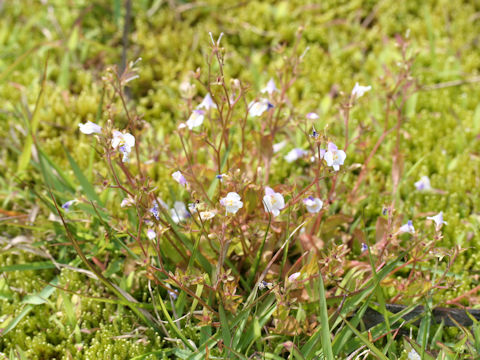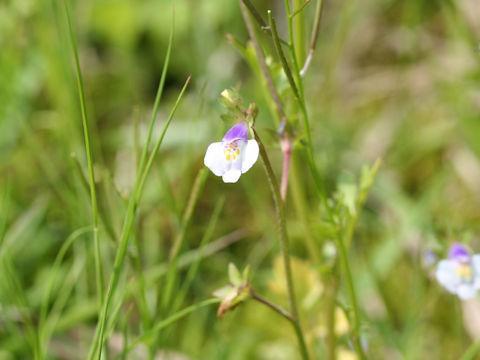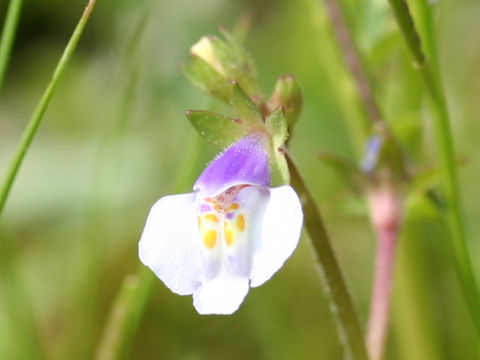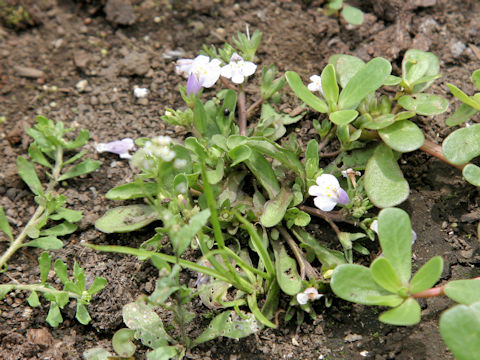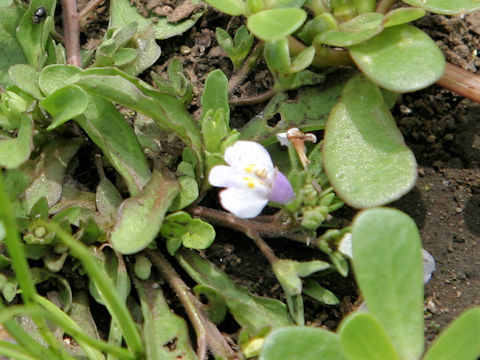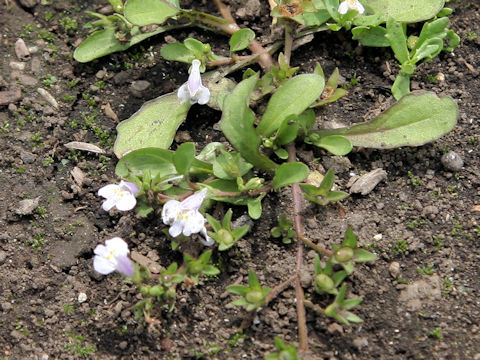
|
The Mazus (Mazus pumilus) belongs to Scrophulariaceae (the Figwort family). It is a perennial herb that is distributed in various parts of Japan, as well as Taiwan, the Korean Peninsula, China, Southeast Asia, and India. It grows on the shores of rice fields and moist grasslands, and is about 5 to 15 cm high. The leaves are a few from the roots, obovate or spoon-shaped, with blunt serrations on the edges. From spring to fall, it blooms pale magenta lip-shaped flowers almost all year round. It is similar to "Sagi-goke" (Mazus miquelii), but it can be distinguished by the fact that it has no stolons, small flowers and light colors. In Taiwanese Chinese, it is "通泉草", in Chinese, it is "通泉草" (tong quan cao).
|

